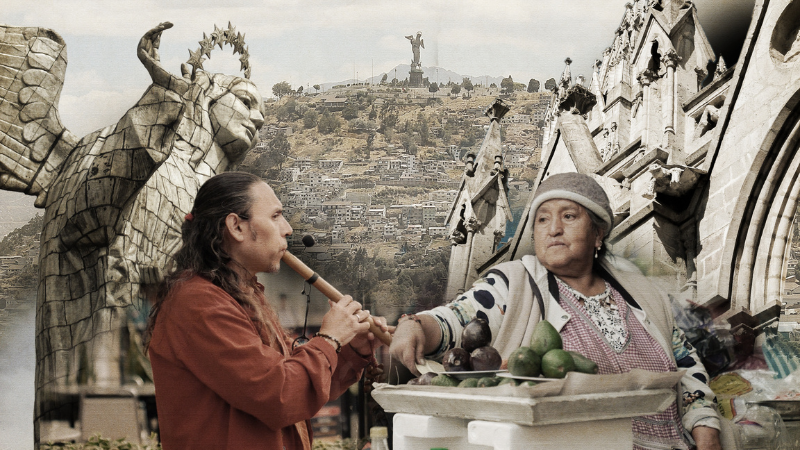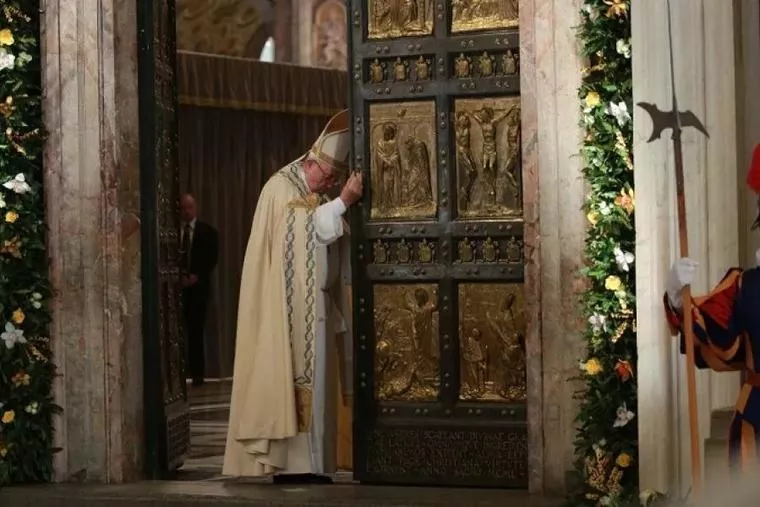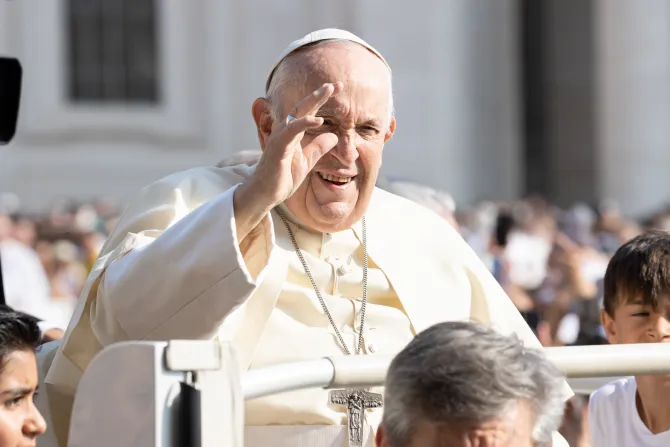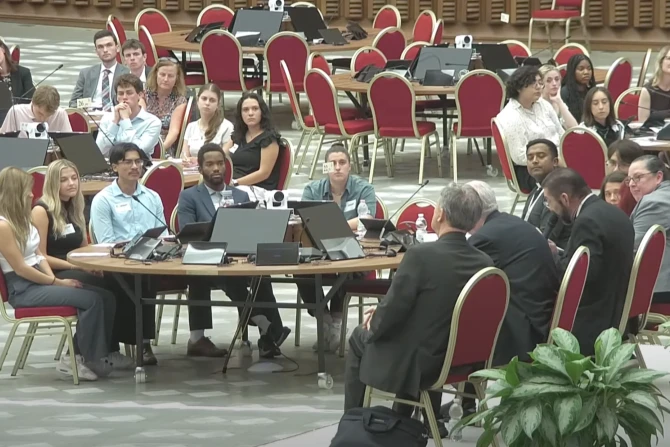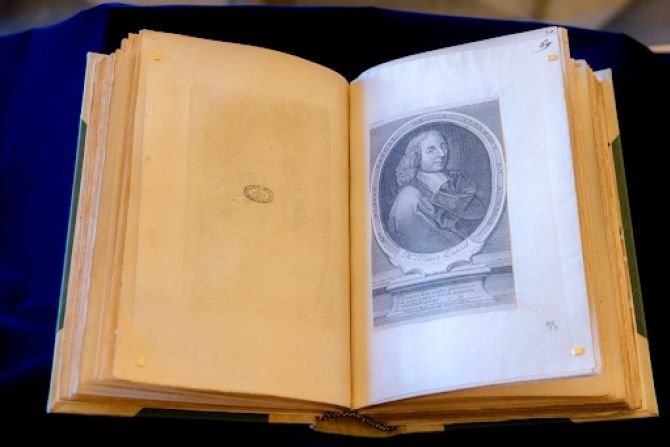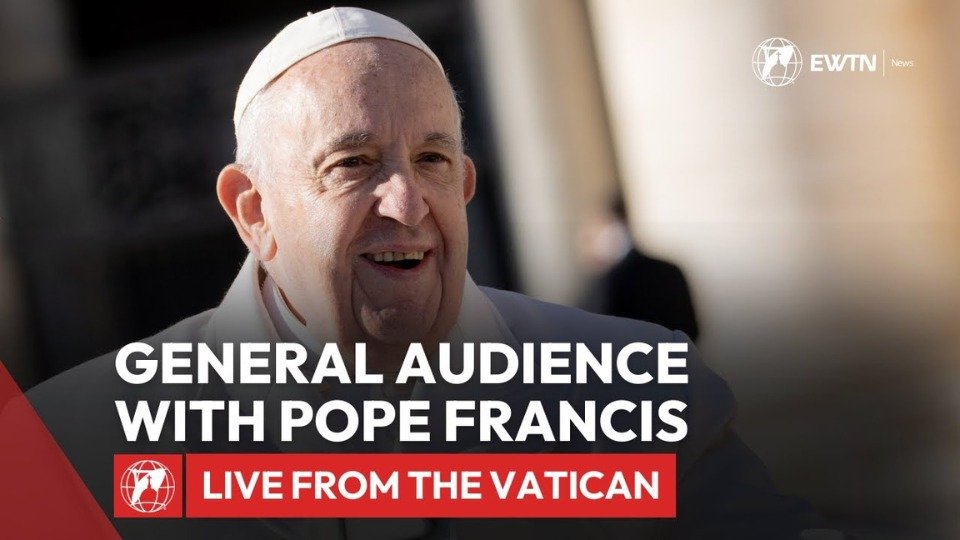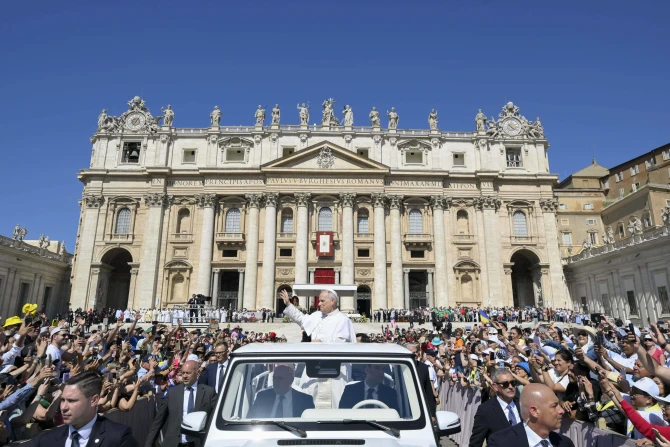The 53rd International Eucharistic Congress in Quito
As the 53rd International Eucharistic Congress concluded in Quito, Ecuador, on September 15th, Vatican officials announced that the next Congress will take place in Sydney, Australia, in 2028. The congress offered a unique opportunity to reflect on Quito’s deep Catholic roots and the city’s role in global faith.
Seven Crosses and the Heart of Quito’s Catholic Legacy
In the heart of Quito, Garcia Moreno Street—historically known as De las Siete Cruces (Seven Crosses)—is a testimony to the city’s longstanding Catholic tradition. The street earned its name from the stone crosses erected over the centuries outside its churches and convents, which served as popular altars during Corpus Christi celebrations.
Local resident Josué Lucero shared the historical significance: “The Bishop of Quito, back in the colonial times, wanted every church to have a cross of stone to represent Jesus Christ’s death and love for us. So, I think it’s also the way of love, like passing through these beautiful churches.”
Visitors can tour the seven colonial crosses, starting at the Church of Santa Bárbara and continuing south past the Monastery of the Limpia Concepción, eventually reaching the Metropolitan Cathedral, consecrated in 1572. The Cathedral, with its monumental structure, is more than just an architectural gem. As Rebeca Proano, a local guide, noted, “The important thing about this church is not only the structure, but the power of God it represents for the people, for the religion, for the faithful. This cathedral represents the divine power that is present here, in this country.”
Basilica del Voto Nacional and Ecuador’s Consecration to the Sacred Heart of Jesus
Among Quito’s many sacred landmarks is the Basilica del Voto Nacional, or the “National Vow,” the largest neo-Gothic basilica in the Americas. Built as a reminder of the 150-year-old decree that consecrated Ecuador to the Sacred Heart of Jesus, this basilica has been central to Ecuador’s Catholic identity.
The decree, signed by then-president Garcia Moreno, is commemorated by Quito’s most important street, named in his honor. The anniversary of this consecration, a significant reason for Ecuador’s selection to host the International Eucharistic Congress, highlights the deep connection between the nation’s history and its faith.
Carlo Acutis and the Centrality of the Eucharist
During the congress, Sister Leticia Alvarez emphasized the importance of the Eucharist, invoking the example of Blessed Carlo Acutis: “This is a historical moment, and we need more than ever to strengthen our faith, especially in the love of the Eucharist. Carlo Acutis, who is a wonderful Italian guy, said that the best highway to get to heaven is the Eucharist. The Eucharist is what has to ignite us now.”
More than 40 delegations from across the globe attended the congress, and many Catholics in Ecuador hope that this event will leave a lasting spiritual impact, inspiring young people to reconnect with their faith. Pedro, a local participant, expressed his belief that this gathering will help non-believers better understand Catholicism: “I think this event will attract new people who have no idea what being a Catholic means. If Jesus Christ didn’t judge others, who am I to condemn?”
The Panecillo Virgin Mary: Symbol of Faith and Hope
High above the city on Panecillo Hill, the towering statue of the Panecillo Virgin stands as a beacon of faith. Measuring 41 meters tall and weighing 124,000 kilograms, the statue is a unique depiction of the Virgin Mary with angelic wings. The Panecillo Virgin Statue has become an essential site of pilgrimage during the Eucharistic Congress, symbolizing hope for the future.
“As an Ecuadorian and Quiteño,” Javier shared, “we are very proud to be represented by this monument. Since within the city almost 70% of people are Catholic, having the Virgin of Quito, the winged Virgin, enhances the value of the Catholic Church in Ecuador. Especially now that it has become an important point for the visit of the Catholic Congress.”
Created by Spanish artist Agustín de la Herrán Matorras in 1975, the statue was based on the Virgin of Legarda, an 18th-century work by Bernardo de Legarda, a prominent figure of the Quito School. The Panecillo Virgin is unique in its representation, showing Mary as described in the biblical book of Revelation: a woman with wings, with a chain holding the serpent beneath her feet. For this reason, the statue is also called the Virgin of the Apocalypse.
Gabriela, a 28-year-old local, shared her personal connection to the Panecillo Virgin: “I have always been marked by the presence of the Virgin. This specific place, the Panecillo, and the Virgin have always been very important to me. I think it’s crucial to pass on the faith from an early age. I have a 1-year-old son, and my hope is that he will have faith, that God loves him, that God accepts him, and that the Virgin will always be with him.”
Quito’s Faithful Remain Strong
Quito, the first city in the world to be declared a UNESCO World Heritage Site, remains deeply rooted in faith, with 85% of the population baptized Catholic. The International Eucharistic Congress has reaffirmed the city’s commitment to its faith heritage, as the people of Quito continue to look toward the Eucharist for spiritual renewal and hope for future generations.
From the historic streets of Quito to the towering Panecillo Virgin, this Congress has brought faith, history, and tradition together, offering a powerful reminder of the enduring strength of Catholicism in Ecuador.
Adapted by Jacob Stein

